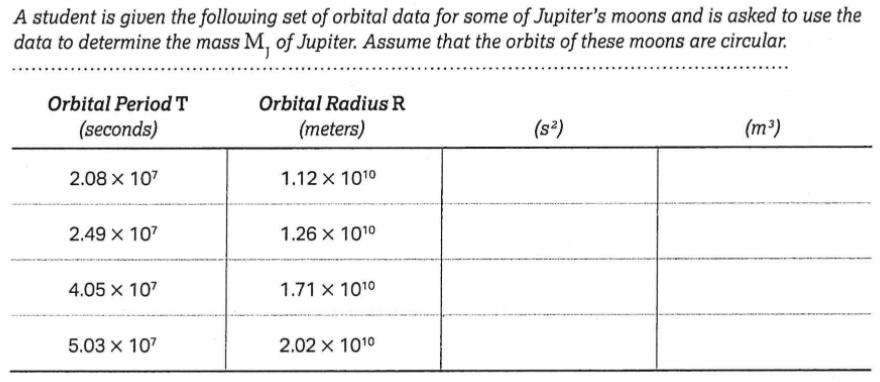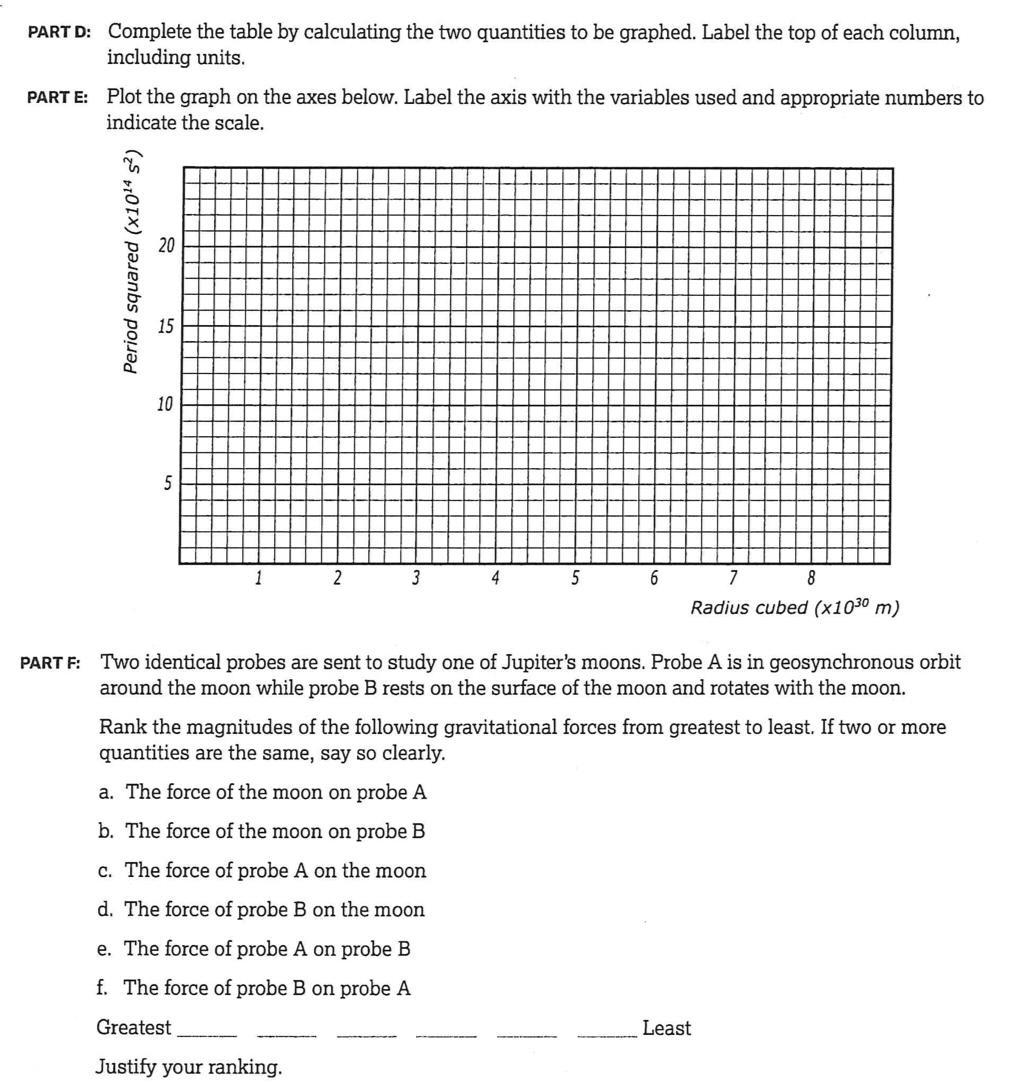Answered step by step
Verified Expert Solution
Question
1 Approved Answer
A student is given the following set of orbital data for some of Jupiter's moons and is asked to use the data to determine


A student is given the following set of orbital data for some of Jupiter's moons and is asked to use the data to determine the mass M, of Jupiter. Assume that the orbits of these moons are circular. Orbital Period T Orbital Radius R (seconds) (meters) (s2) (m) 2.08 x 107 1.12 x 1010 2.49 x 107 1.26 x 1010 4.05 x 107 1.71 x 1010 5.03 x 107 2.02 x 1010 PART D: Complete the table by calculating the two quantities to be graphed. Label the top of each column, including units. PART E: Plot the graph on the axes below. Label the axis with the variables used and appropriate numbers to indicate the scale. 15 10 5 1 2 3 4 5 6 8 Radius cubed (x1030 m) PART F: Two identical probes are sent to study one of Jupiter's moons. Probe A is in geosynchronous orbit around the moon while probe B rests on the surface of the moon and rotates with the moon. Rank the magnitudes of the following gravitational forces from greatest to least. If two or more quantities are the same, say so clearly. a. The force of the moon on probe A b. The force of the moon on probe B c. The force of probe A on the moon d. The force of probe B on the moon e. The force of probe A on probe B f. The force of probe B on probe A Greatest Least Justify your ranking. 20 Period squared (x1014 s)
Step by Step Solution
★★★★★
3.37 Rating (144 Votes )
There are 3 Steps involved in it
Step: 1
T radius s2 m3 20800000 11200000000 43264E14 140493E30 24900000 ...
Get Instant Access to Expert-Tailored Solutions
See step-by-step solutions with expert insights and AI powered tools for academic success
Step: 2

Step: 3

Ace Your Homework with AI
Get the answers you need in no time with our AI-driven, step-by-step assistance
Get Started


